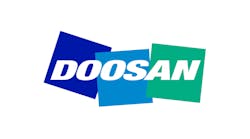The point of both of these features is that it is better to avoid the heat than to take it. In both reports, the lesson to be learned is that heat can lead to problems that most machine shop owners would rather avoid, and could avoid if they are smart.
In a report on the uses of infrared thermographic imaging to diagnose machine tool problems (see Page 46) Senior Editor Charles Bates notes that a well thought out survey of a machine shop that uses thermographic imaging can be an effective preventive maintenance tool. Knowing the heat signatures of machines and conducting regular surveys can provide early identification of trouble spots and help to prevent production interruptions or inordinate downtime for repairs. With thermographic imaging, problems can be detected and dealt with early on.
In a similar way, Ted Cowie, the president and chief operating officer for Safety Today's Protective Product Group, writes (see Page 42) that establishing a culture of safety within a potentially dangerous manufacturing environment can help to deter production interruptions and excessive downtime that could be caused by employee injuries. Cowie's point is that management cannot presume that adhering to regulations and establishing policies will be sufficient to eliminate safety hazards within their buildings. Instead, he argues, management has to instill a "culture of safety," that ensures that all of a company's employees think about what they are doing and their environment, and act to eliminate the hazards that are seen and hidden.
Both of these features imply very strongly that a business has to be well planned for, and that smart business practices go beyond the knowledge of making chips.


